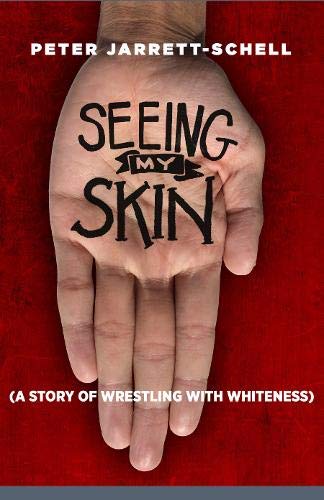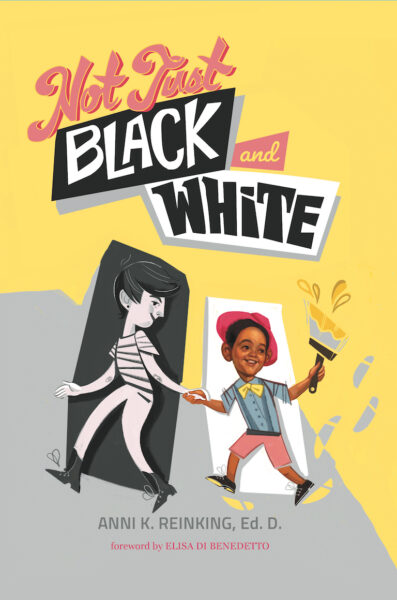New books explore the impact of racism on millions of racially mixed American families
There have been millions of pages written about what racism is and who is a racist, but there have been fewer pages devoted to the concept of organizing around antiracism.

So begins a recent Publishers Weekly profile of National Book Award-winner Ibram X. Kendi and his book, How to be an Antiracist, which is due out in .
Kendi plays a cameo role toward the end of Peter Jarrett-Schell’s new memoir, Seeing My Skin: A Story of Wrestling with Whiteness. Peter credits Kendi as writing one of the single most comprehensive historical treatments of American racism,
citing Kendi’s earlier prize-winning book, Stamped from the Beginning. That kind of citation is evidence of the solid foundation beneath Peter’s ministry (he’s pastor of Calvary Episcopal Church in Washington D.C.) and his new memoir about family’s hard-earned lessons over the years.
Seeing My Skin—great for small groups
Peter’s book won’t be released until from Church Publishing, the century-old publishing house of the Episcopal Church in the U.S. However, you can pre-order Seeing My Skin now from Amazon so you can be ready to discuss it in your congregation’s class or small group this autumn.
Just as Ibram Kendi is taking a fresh approach to one of this year’s most widely debated issues, Peter and others are exploring the dynamics of racism that surround and impact blended families. Peter is the pastor of a historically black congregation, the husband of a black woman, and the father of a biracial child.
What is especially fresh and compelling about Peter’s book is that he designed this memoir as if he had somehow written occasional journal entries all the way from his childhood through the twists and turns of a complex life, a later-in-life calling to ministry, marriage, fatherhood and the election of Donald Trump. He invites us on a journey that spans the better part of half a century—and includes real-life collisions of race and ethnicity in many corners of the U.S. and the world. He lived for a while while he was single in El Salvador. Later, he and his wife traveled to Ethiopia.
In 276 pages, Peter tells stories that reveal one facet after another of the racial filters that shape our world. Some of those facets clarify crystal-clear points Peter wants to make; others are oblique reflections of cultural attitudes that make us stop and think.
How many racially blended families are there in the U.S.?
No one knows how many millions of racially blended families are living in the U.S., partly because that blending can be defined in so many ways that the data is hard for scholars to track.
Pew Research has been trying to track these trends for more than a decade. One benchmark Pew often cites is U.S. Census data, which is now 10 years out of date. Based on the last census: About 15% of all new marriages in the United States in were between spouses of a different race or ethnicity from one another, more than double the share in (6.7%).
The other complication in such research, Pew reports, is that for many multiracial Americans, racial identity can change over the life course. It is a mix of biology, family upbringing and the perceptions that others have about them.
There are millions of families nationwide who represent more than one race—but no one yet has clearly defined the numbers.
Pioneering authors: Kelley Nikondeha and Anni K. Reinking
One of the pioneering books on this topic, which we recommended in a ReadTheSpirit magazine cover story, is Kelley Nikondeha’s book, Adopted: The Sacrament of Belonging in a Fractured World.
New is Anni K. Reinking’s Not Just Black and White.
The Italian journalist Elisa Di Benedetto described the importance of her book in its Foreword:
What is race? How do we define identity? How does education affect our life and relationships? Welcome to Anni K. Reinking’s world, where even the smallest occurrence of everyday life raises new questions and reflections, involving sociology, anthropology, religion and psychology. This is Anni’s emotionally and intellectually moving memoir of her life as a white mother raising a black son in multiracial America—but it is so much more than that. While her story is based in the U.S., this is a global story. This book is an extraordinary journey towards awareness and learning. That’s how the world changes for the better—one story at a time that touches us and makes us realize we share far more with our neighbors than might seem to separate us.

Reinking has spent years as a researcher, scholar and educator. Her roles as mother and researcher come together in this important new book. She shares her family’s life in the hope that these stories will foster learning, discussion and new places for reflection and growth. She is honest even about her own occasional stumbling as a mother through cross-racial experiences in which she discovered how much more she has to learn.
In telling those true stories, she invites readers to open up their own lives.
Writer Christine Michel Carter, who specializes in working with black families and consumers, encourages readers to embrace Reinking’s fresh perspective in this book.
For years I have researched and written for the general public, advocating for equality, uncovering the challenges of black motherhood and revealing the many cultures that reside in our country,
Carter writes. However, Dr. Anni is doing something I cannot: using stories of her own ignorance in hopes that it will push her colleagues outside of their own comfort boundaries and foster within them a place for growth and reflection.